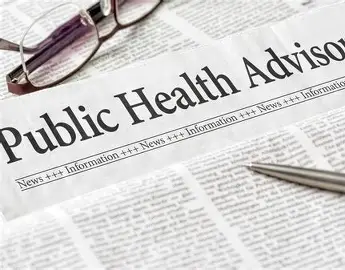Herein this article, we discussed Health and Education Are Deeply Interconnected, The Digital Divide Is a Public Health and Educational Emergency, Education Is a Vital Tool for Public Health Literacy, Mental Health Deserves a Permanent Place in Education, Schools Are More Than Places of Learning—they’re Lifelines, A Call for Integration, Not Isolation.
In the face of public health crises—whether it’s a global pandemic like COVID-19, an outbreak of measles, or the ongoing opioid epidemic—our vulnerabilities are exposed. But these crises don’t just test the resilience of our healthcare systems. They shine a harsh light on the structures that support society at large, including one that is foundational to our collective well-being: education.
- Health and Education Are Deeply Interconnected
Public health crises remind us that health and education are not separate silos. When students are unwell—physically or mentally—they struggle to learn. During the COVID-19 pandemic, children from underserved communities were disproportionately affected by school closures, both academically and emotionally. Poor nutrition, lack of healthcare access, and unstable housing compounded their challenges.
This highlights a crucial point: we cannot address educational equity without addressing health equity. Schools must be equipped not only as centers of learning but also as community hubs for health services, nutrition programs, and mental health support.
- The Digital Divide Is a Public Health and Educational Emergency
The abrupt shift to online learning during the pandemic laid bare the digital divide. Millions of students lacked reliable internet access or digital devices. What was initially a health measure (social distancing) becoming an education barrier for many. And it continues to be—especially for rural and low-income students.
Public health crises teach us that access to technology is not a luxury—it’s a necessity. Bridging the digital divide is both an educational and a public health imperative, as information access and connectivity are critical in both domains.
- Education Is a Vital Tool for Public Health Literacy
During a health crisis, accurate information saves lives. Misinformation, however, spreads faster than viruses. The education system plays a vital role in equipping individuals with critical thinking skills, scientific literacy, and the ability to evaluate sources of information.
From understanding vaccine science to navigating mental health challenges, education prepares communities to respond wisely and calmly to public health threats. Curriculums that include public health education help build a population that is better prepared and less susceptible to harmful misinformation.
- Mental Health Deserves a Permanent Place in Education
Lockdowns, isolation, and loss profoundly impacted students’ mental health. The ripple effects are still being felt today. Anxiety, depression, and trauma have become more visible, forcing schools to confront a long-ignored issue.
Public health crises make it clear: mental health is inseparable from learning. Schools must embed mental health support within their educational frameworks—training staff, destigmatizing counseling, and fostering environments where emotional wellness is prioritized.
- Schools Are More Than Places of Learning—they’re Lifelines
For many children, schools are safe havens: places where they receive meals, medical checkups, social interaction, and stability. When schools close, it’s not just learning that is disrupted—it’s their entire support system.
This teaches us that education policy must be informed by public health realities. Investments in school infrastructure, community health partnerships, and emergency preparedness are essential for schools to fulfill their broader social roles.
A Call for Integration, Not Isolation
Public health crises don’t just challenge our medical systems—they stress-test our social fabric. Education is one of the strongest threads in that fabric. What these crises teach us is that education and health are deeply intertwined. To build a resilient society, we must invest in integrated policies that support both.
From universal school meals to mental health counselors, from broadband access to public health education in the curriculum, the future demands a new kind of thinking—one that understands that when schools are strong and inclusive, our communities are healthier, safer, and better prepared for whatever comes next.
Conclusion
Public health crises, while devastating, offer a profound opportunity for introspection and transformation within our educational systems. They serve as a stark reminder that education is not merely about accumulating facts, but about cultivating skills, fostering critical thinking, promoting lifelong learning, and instilling a sense of responsibility towards our collective well-being. By heeding these invaluable lessons, we can build more resilient, informed, and compassionate societies, better equipped to face the public health challenges of today and tomorrow. The classroom, in its broadest sense, is our first line of defense.

